
I recently participated in an album draft, run by Hans from https://slicethelife.com/. Like everyone else I picked 10 albums, but I used mine to also tell a story about music fandom. Here are ten albums that broadened my horizons about popular music.
Parsley, Sage, Rosemary & Thyme – Simon & Garfunkel
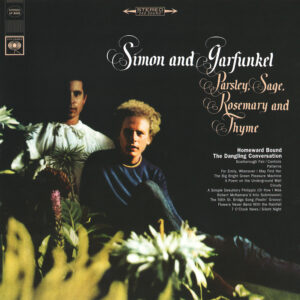
1966
My parents owned a lot of music, but most of it was bagpipes or classical music they never actually listened to. Their one album that I did enjoy was a cassette of Simon and Garfunkel’s Parsley, Sage, Rosemary, and Thyme – Simon & Garfunkel aren’t cool, except when the alternatives are Charley Pride and Nana Mouskouri, When I became interested in music at around 12 years old, this was my first album after I commandeered it.
Parsley, Sage, Rosemary, and Thyme shaped my taste in that it’s a very studio-based album. Simon and Garfunkel’s first album was straightforward trad-folk and their second was hastily slapped together to capitalise on the success of ‘The Sound of Silence’. For their third album, they were able to stretch out in the studio; Simon could add harpsichord to ‘Scarborough Fair/Canticle’ or bring in Dave Brubeck’s rhythm section for ’59th Street Bridge Song (Feelin’ Groovy)’. This largely set the pattern for my music listening – I’m much more interested in studio creativity than in sweat-drenched live sets.
The best known songs are the strongest – ‘Scarborough Fair/Canticle’ interpolates the English folk song with ‘The Side of the Hill’, anti-war lyrics written by Simon and set to music by Garfunkel (earning a rare writing credit). ’59th Street Bridge Song’ has the great first line “Slow down you move too fast/you’ve got to make the morning last”. ‘Homeward Bound’ was written by Simon on Widnes station during a stint in the UK. There are some worthwhile deep cuts too – Garfunkel sweetly delivers ‘For Emily, Wherever I May Find Her’, while ‘Flowers Never Bend With The Rainfall’ is pretty, low-key folk-rock.
As much as I have a sentimental attachment to Parsley, Sage, Rosemary, and Thyme, it’s not a flawless classic – ‘Poem on an Underground Wall’ over-dramatises an act of graffiti (four letters!) into a dirge while ‘The Dangling Conversation’ goes where rock music usually fears to tread with its references to Emily Dickinson and Robert Frost. ‘A Simple Desultory Philippic (Or How I Was Robert McNamara’d into Submission)’ is fun, but it’s a dated period piece.
It’s not even Simon and Garfunkel’s best record, but there could have been far more embarrassing ways to launch a music collection than Parsley, Sage, Rosemary & Thyme.
Magical Mystery Tour – The Beatles

1967
Most people my age probably grew up taking The Beatles for granted as a band for their parents, but my parents weren’t interested. When The Beatles drove past my dad’s cricket game in Christchurch at the peak of Beatlemania, it was only vaguely interesting. The first album I bought was The Beatles’ compilation Rock n Roll Music Volume 1, but a much better Beatles acquisition was when my sister found 50c LP copies of Sgt Peppers and Magical Mystery Tour at a Church fair and gave them to me as a birthday present.
Magical Mystery Tour was originally created for the American market – in the UK, the tracks from the movie Magical Mystery Tour were released as a double EP. In the US they were combined with the band’s 1967 singles onto an album, and it’s this compilation that’s become a canonical record in The Beatles discography.
While I was initially drawn to The Beatles’ early rock and roll numbers like ‘Twist and Shout’, I later gravitated to their work later in the 1960s as they became more sophisticated. Like Parsley, Sage, Rosemary, and Thyme, Magical Mystery Tour is a product of the studio; producer George Martin was known as the fifth Beatle, and it continued my fascination with sounds of the studio. Martin was a noted orchestral arranger, and songs like ‘I Am The Walrus’ and ‘Fool on the Hill’ are notable for their arrangements.
Magical Mystery Tour houses my three favourite Beatles songs. Paul McCartney’s ‘Penny Lane’ and John Lennon’s ‘Strawberry Fields Forever’ were both from the Sgt. Peppers sessions, released as a double a-side single and collected here.Lennon’s ‘I Am The Walrus’ was a new song for the movie. Lennon’s songs are two of the best artifacts from the psychedelic era, while ‘Penny Lane’ is sophisticated and perky. ‘Penny Lane’ and ‘Strawberry Fields Forever’ are both childhood reminiscences, while ‘I Am The Walrus’ is nonsense, taking inspiration from Lewis Carroll’s ‘The Walrus and the Carpenter’.
Magical Mystery Tour is less consistent than The Beatles best-loved records, but it contains some of their very best work, which means they’re some of the best songs of the rock era.
Court and Spark – Joni Mitchell
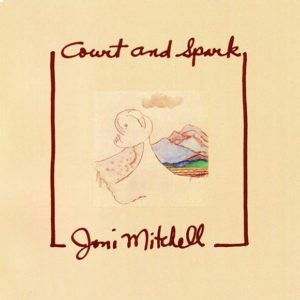
1974
University was a great time for learning about new music. I studied in a bigger city with better record shops, and I had a part-time job and a bigger record buying budget. I found lots of favourite records in second hand bins, bargain bins, and most especially second hand bargain bins.
Of all the additions to my music library in this period, my most played was Joni Mitchell’s Court and Spark. Mitchell’s best known for early folk songs like ‘Both Sides Now’ and ‘Chelsea Morning’. She’d tried playing with studio bands but felt they trampled over her sophisticated guitar tunings. When she mentioned this to a friend, they suggested she play with jazz musicians.
Court and Spark was Mitchell’s first record with a full band, Tom Scott’s LA Express. Her music retains the confessional lyrics of earlier records like Blue, but the more sophisticated arrangements give her music more dynamism.
Jazzy pop songs like ‘Help Me’ and ‘Free Man in Paris’ provide the entry points. The lovely title track and ‘Car on the Hill’ (written about Jackson Browne) provide the introspection. Robbie Robertson plays guitar on the rock-oriented ‘Raised on Robbery’ and the cover of Annie Ross’ ‘Twisted’, with Cheech and Chong on backing vocals, provides some levity.
Mitchell made five phenomenal records between 1971 and 1976 – Court and Spark is the middle one, and probably the most accessible. The early 1970s were a great time for terrific albums with other artists like Stevie Wonder, Neil Young, David Bowie, Yes, Genesis, Curtis Mayfield, and Led Zeppelin also in their prime, but I’m happy with Court and Spark as my selection from the era.
The Clash – The Clash

1977
My musical tastes expanded while I was at university, and one particular band was the primary driver. The Clash started as a punk band, but during their career they explored a lot of directions – reggae was in their DNA, growing up in rough London suburbs, but they also dabbled in hip hop, dub, and rockabilly. Their leftist politics were also perfect for a university student; frontman Joe Strummer was the son of a diplomat and he eloquently decried US intervention in ‘Washington Bullets’.
Initially I was drawn in by The Clash’s later hits like ‘London Calling’ and ‘Should I Stay or Should I Go?’ – with their more mainstream sound, they were classic rock staples. Punk’s often simple, but musical mainstay Mick Jones was a gifted guitarist and tunesmith, while bassist Paul Simonon developed into an excellent player.
My favourite Clash album is the US version of their 1977 debut. The original version was successful in the UK, reaching number 12 on the charts, but their record company refused to release it in the US, feeling it was too raw. It instead became the best-selling import of all time. It featured the group’s early punk songs like ‘Career Opportunities’ and ‘White Riot’, along with a very assured stab at reggae with their cover of ‘Police and Thieves’.
The 1979 US version actually improves on the original by removing four songs and replacing them with non-LP singles. Drummer Terry Chimes left after recording the debut, and was replaced by Topper Headon, an immediate upgrade. ‘Complete Control’ is a broadside at their record company, bristling with indignation, while their version of ‘I Fought the Law’ rocks. The crown jewel though, is ‘(White Man) in Hammersmith Palais’, full of Joe Strummer’s creative wordplay and shifting gears seamlessly between punk and reggae.
The Clash helped me through university – when I wrote my major essay on English punk rock for one history course, I titled my paper ‘Turning Rebellion Into Money’, a line from ‘(White Man) in Hammersmith Palais’.
Stop Making Sense – Talking Heads

1984
When I learned piano as a kid, I wasn’t especially interested in music. It wasn’t until later that I gained some keyboard role models – Freddie Mercury, The Band’s Garth Hudson, and Stevie Wonder were all players who made me wish I’d given more effort to lessons so that I could better emulate them all. My favourite though was Bernie Worrell.
Worrell is best known for his keyboard work with George Clinton’s projects – Parliament and Funkadelic. As much as I enjoy classics like ‘Flashlight’ and ‘Maggot Brain’, it was easier to connect to Worrell’s work on Talking Heads’ Stop Making Sense. The album is a soundtrack for a beloved concert film – directed by Jonathan Demme, Stop Making Sense captures an expanded version of the band blasting through their catalogue, accompanied by memorable visual imagery like the gimmick of the band expanding throughout the early songs and David Byrne’s enormous suit.
Worrell served as a satellite member of the band as they expanded to beef up their live sound. The core band of Byrne, Jerry Harrison and the married rhythm section of Chris Frantz and Tina Weymouth were joined by Worrell, Alex Weir on guitar, percussionist Steve Scales, and two female vocalists. The group could sound a little thin on record, especially on their albums without producer Brian Eno, but live they were vibrant.
It’s the numbers from 1983’s Speaking in Tongues that benefit most from the Live treatment. Worrell’s funky synth leads cut through the interlocking guitars on an incendiary live version of ‘Burning Down the House’, and his swooping synth lines on ‘Making Flippy Floppy’ add colour. Jerry Harrison also plays keyboards, and the tandem keys on ‘Life During Wartime’ sound great. The 16 track expanded version is stronger than the original soundtrack – most impressive is the closer ‘Crosseyed and Painless’ with its polyrhythms and Byrne on lead guitar.
1980s synths are often dismissed as dated and corny, but in the hands of a master like Worrell they sound great, and Stop Making Sense is an iconic live album.
Illmatic – Nas
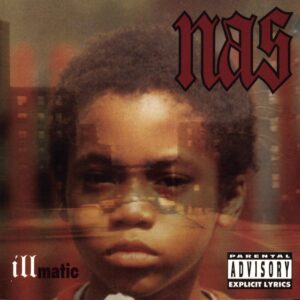
1994
In my late twenties, my music buying plummeted drastically for two reasons. The city I lived in no longer had a second-hand record store, while I got married and we bought a house together limiting my disposable income. I did still pick up some CDs sometimes – I scoured the bargain bins at the local department store, while my work was a block away from the local pawn shop. I snagged some good albums from that shop, often for a few dollars – one of my favourites was Nas’ Illmatic.
Twenty-year-old Nas released one of the most critically acclaimed hip hop albums of all time with his debut Illmatic. It was recorded in New York, and along with contemporary releases from The Wu-Tang Clan and Mobb Depp, the period was known as the East Coast Renaissance.
Illmatic is structured like a rock album – a tight ten-track, forty-minute record that eschews the skits and long running times of 1990s hip hop. With its realistic portraits of street life in New York and lack of glamour, it’s a natural hip hop album for rock fans to gravitate towards, and it’s not surprising that it’s a fixture of best album of all time lists.
Nas is the son of trumpeter Olu Dara Jones, who plays the cornet on ‘Life’s A Bitch’. Nas is also accompanied by AZ, and the pair deliver memorable and nihilistic lines like “And my mentality is money-orientated/I’m destined to live the dream for all my peeps who never made it.”‘The World Is Yours’ provides a note of optimism on a streetwise, realistic record. Nas wrote the lyrics for ‘N.Y. State of Mind’ in the studio during the recording session, but it was later featured in the Norton Anthology of African American Literature.
Illmatic is generally regarded as one of the best hip hop records of all time, and I’m not going to disagree.
Illinois – Sufjan Stevens
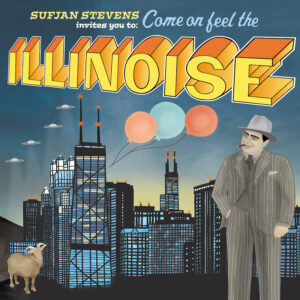
2005
It took me until my mid-twenties to actively seek out new music – up until that point I was spending my listening time catching up with older music. I gravitated to indie music – in a lot of cases it continued some of the things I liked about classic rock. It always confused me when The New Pornographers were filed in the “alternative” section of record stores when they sounded far more like The Beatles that say, Britney Spears (who were both in the pop/rock section).
Detroit-born Sufjan Stevens didn’t sound like especially the vintage popular music I was listening to, although he’d clearly listened to some of the same music I was enjoying. His quieter moments recalled the gentle songs of Nick Drake and Simon and Garfunkel. The repetitive modern classical music of Steve Reich, like Music for 18 Musicians, is also a clear influence, as well as the sonic experimentation of Brian Eno. While Stevens identifies as a Christian, he didn’t pigeonhole himself into the Christian market. Instead, he presented Christian themes in a record that resonated for many music fans.
2005’s Illinois was Stevens’ fifth album. I enjoyed 2004’s Seven Swans so much that I pre-ordered a copy. This was great because my early copy featured Superman on the cover – the label later covered up the man of steel, worried about a lawsuit from DC Comics. Seven Swans was very good, Illinois was a behemoth, a 73-minute album stuffed with musical ideas.
The gentle folk of Seven Swans was still there – on ‘John Wayne Gacy, Jr.’ Stevens compared his own secret misdeeds to the Chicago-born mass murderer. On the devastating ‘Casimir Pulaski Day’ he sings of his hopelessness when a friend is diagnosed with bone cancer and his prayers are unanswered.
Stevens is a talented multi-instrumentalist who’s proficient on oboe, guitar, banjo, keyboards, and English horn, and he’s also a talented and idiosyncratic arranger. ‘Come On! Feel the Illinoise!’ escalates from an opening piano riff that recalls a Vince Guaraldi Peanuts theme into a multi-layered wonder. Jazzy horns punctuate ‘Jacksonville’, while ‘The Man of Metropolis Steals Our Hearts’ is shaken by sections of thumping percussion and distorted guitars.
Illinois was Stevens’ second album based around a US state, following 2003’s Michigan. Stevens teased the album by promising 48 more records themed after states but has since acknowledged it was a publicity stunt. He’s only released two more studio albums since Illinois, although another new record, The Ascension, is due next week.
Twin Cinema – The New Pornographers

2005
Vancouver’s The New Pornographers started as a supergroup drawn from a pool of local Canadian bands. Leader A.C. Newman came from a power-pop band named Zumpano, while Dan Bejar’s attained recognition as Destroyer and Neko Case is beloved for her alt-country records.
Twin Cinema is the collective’s third album together, and for me, it’s their peak – it provides the perfect balance between the energetic power-pop of their earlier work and their more nuanced later work. Newman’s lyrics are often about sound rather than meaning – there’s little that’s profound. But the group’s harmonies and Newman’s chord changes are exquisite – Newman’s reminiscent of the great songwriters of the 1960s like Jimmy Webb and Paul McCartney with his ability to make catchy songs with complex frameworks. They’re a great group to immerse yourself in if you haven’t found much music in the 21st century to enjoy – it’s all about melody and harmony.
Newman’s a masterful arranger. Second track ‘The Bones of an Idol’ is less than three minutes, but Newman layers so many ideas onto it. It starts simply; a voice backed with simple piano and acoustic guitar. But instruments are continuously layered on – Todd Fancey’s guitar lick that appears at around 1:15 is a vital component of the song, while the backing vocals at the end lift everything a notch further.
‘Sing Me Spanish Techno’ has more of a rock edge, an energetic power pop song. But it’s the beauty of the harmonies in the chorus that makes the song soar – Case is probably overqualified for the position of backing vocalist, but she elevates the song.
Case takes centre stage for my favourite song on the record, ‘These Are The Fables’. The verse melody is gorgeous, and the little dynamic shifts are lovely.
Dan Bejar has traditionally contributed three songs to each New Pornographers album, and his cryptic songs and idiosyncratic delivery provide some contrast to A.C. Newman’s sugary popcraft.
I was lucky to see The New Pornographers earlier this year – they played in early March, just before New Zealand went into coronavirus lockdown. With eight albums to draw from, including 2019’s very good In the Morse Code of Brake Lights, Twin Cinema was only represented by three songs. Nevertheless, Twin Cinema highlights like ‘The Bleeding Heart Show’ and ‘The Bones of an Idol’ still sounded great.
Emotion: Side B – Carly Rae Jepsen

2016
I was sitting in an aircraft on the tarmac in Sydney airport in January 2018, reading about Captain Beefheart. I selected Canadian pop-star Carly Rae Jepsen’s Emotion: Side B from the aeroplane’s music library. I’m sure a bunch of readers are rolling their eyes at this selection – Jepsen’s widely known as a one-hit wonder for her inescapable 2012 hit ‘Call Me Maybe’. I was aware that 2015’s Emotion had flipped the script for her, making her into a critical favourite, but hadn’t given her much attention.
The first song is ‘First Time’ – it opens with a neat trick of starting with a tinny, distorted snippet of the chorus before launching into full pop. I was hooked in ten seconds.
Jepsen wrote more than 250 songs for Emotion – she rejected the mass-production writing method used by many pop artists. When Emotion gained a following, she announced a sequel made from Emotion outtakes, released the following year. Naturally, Emotion: Side B follows the same formula as Emotion – combining 1980s textures with alternative production. Jepsen’s not a powerhouse vocalist, but her seemingly infinite enthusiasm is infectious. Sometimes you can tell that these eight songs are outtakes – in particular ‘Store’ sounds like she glued random song ideas together into a strangely satisfying whole. ‘Higher’ is melodically strong, but without Jepsen’s writing input the lyrics are frustratingly generic.Most of these outtakes, though, are top drawer. ‘Fever’, as is often the case with Emotion-era Jepsen, doesn’t concern an actual relationship,Instead it examines infatuation and obsession, with moody verses, a soaring pre-chorus, and a dance-tastic chorus. The bridge “my lights stay up/while your city sleeps” is a thing of beauty.
On the other hand, ‘Body Language’ is relentlessly upbeat. I like to use it for my alarm in the mornings – it breathlessly builds, with nary a pause between sections, culminating in Jepsen’s declaration “I think we’re overthinking it”.
The Japanese edition of Emotion: Side B includes ‘Cut to the Feeling’ – it was cut from Emotion: Side B to be used in the animated film Ballerina, which effectively means that it’s an outtake from an outtakes album. But it’s one of Jepsen’s best, euphorically soaring through the chorus.
The last decade has seen a lot of quality pop music – some celebrated in the mainstream and some in the fringes. While mainstream guitar rock feels like it’s run out of ideas, pop’s able to constantly incorporate new rhythms and textures. Jepsen’s sugary pop isn’t for everyone, but if it connects with you it’s a massive burst of adrenaline.
Makkuro – tricot
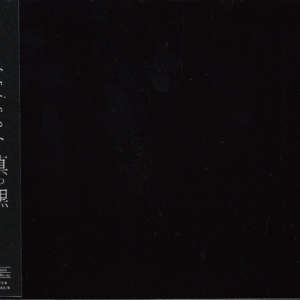
2020
When I was in my early twenties, I saw some of my friends, previously passionate about music, lose interest in new releases. I believe that it’s important to be a lifelong learner in everything – I enjoy cooking with new ingredients and figuring out new stuff at work.
Similarly, I think there’s always new and interesting music out there. It’s inarguable that popular music has become more fragmented and that there’s been a corresponding decline in cultural relevance. When Crosby, Stills, Nash, and Young rush-released ‘Ohio’ in 1970, it felt like a song that could change the world. Fifty years later, except for a handful of megastars, most acts are playing to a niche audience.
With so much choice, it’s easy to become flummoxed. But it also provides a wealth of available music. One of my favourite discoveries from this year is Japanese four-piece guitar band tricot, who mash together progressive rock and pop music. Here’s the closing track.
真っ黒 translates as ‘Pure Black’. The sweet vocal melody is complemented by the group’s sharp musicianship – the cleverly arranged intro and intricate guitar parts work wonderfully to support the song.
Hiromi Sagane’s virtuoso bass-line opens the record on ‘Don’t Mix! Danger’, a rapid-fire punkish opener that’s sweetened by the creative backing harmonies. The group mellow right down on ‘To a Non-Dangerous Town’ – it places Nakajima’s voice in the spotlight, and it’s pretty. The squiggling guitar of ‘One Season’ recalls 1980s King Crimson, but tricot have perfected a math-pop aesthetic on Makkuro.
Makkuro might have some competition as my favourite album of the year, by tricot themselves – they’re scheduled to drop a second 2020 album within the next couple of weeks.
40 Comments
Leave a Reply
Related Posts
Review Pages
Read about the discographies of musical acts from the 1960s to the present day. Browse this site's review archives or enjoy these random selections:
Blog Posts
I add new blog posts to this website every week. Browse the archives or enjoy these random selections:


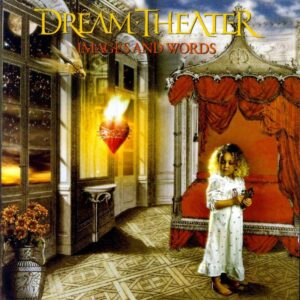

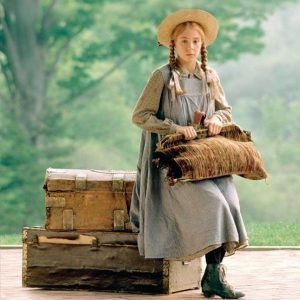
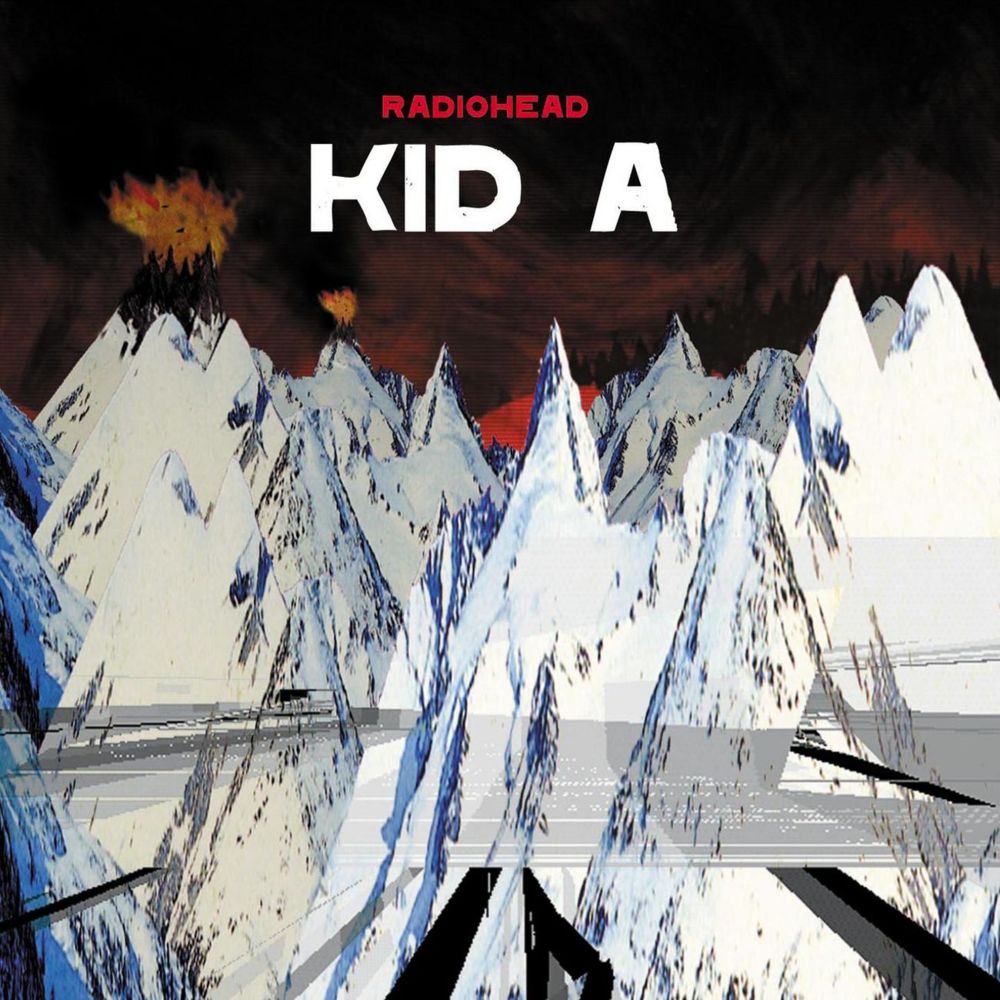

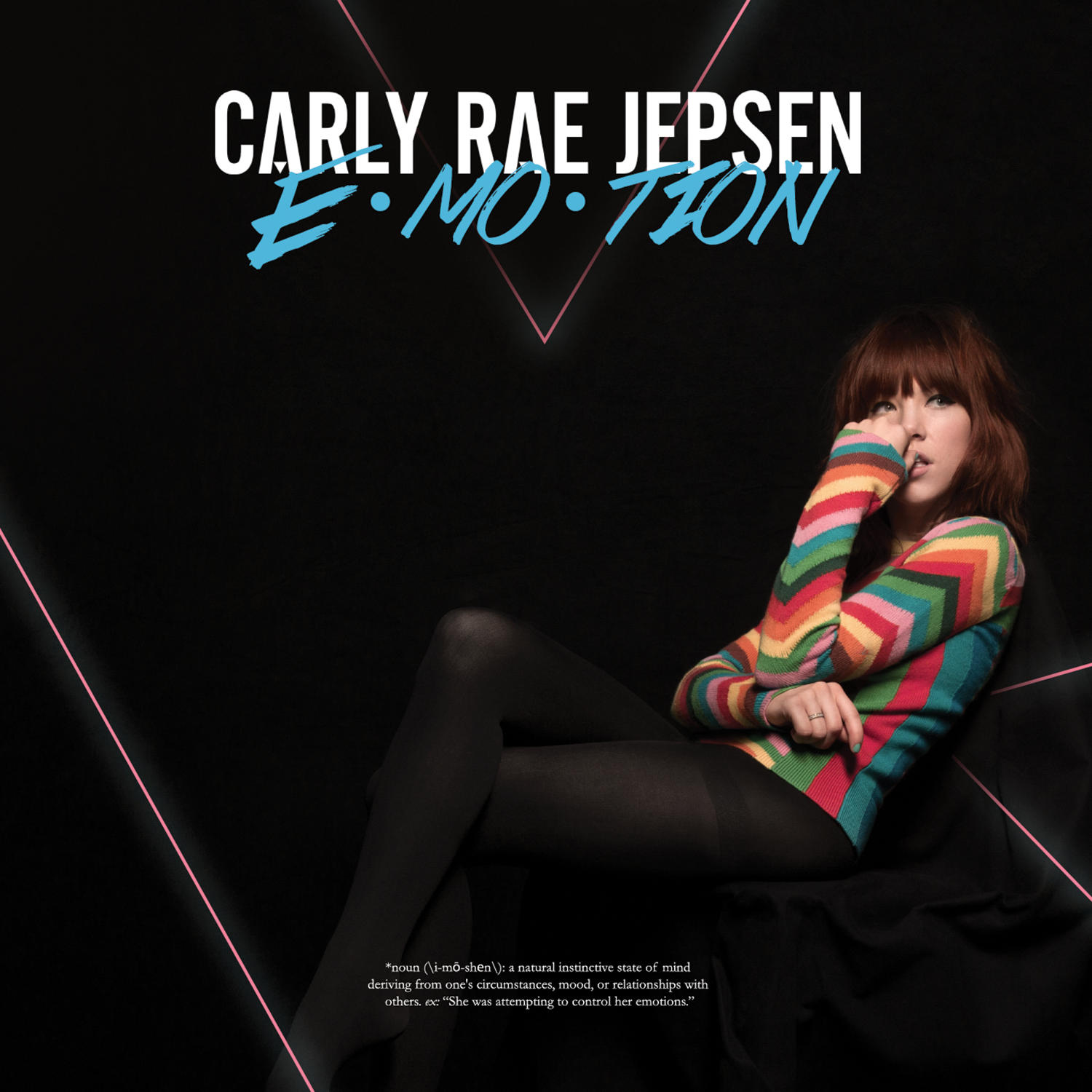


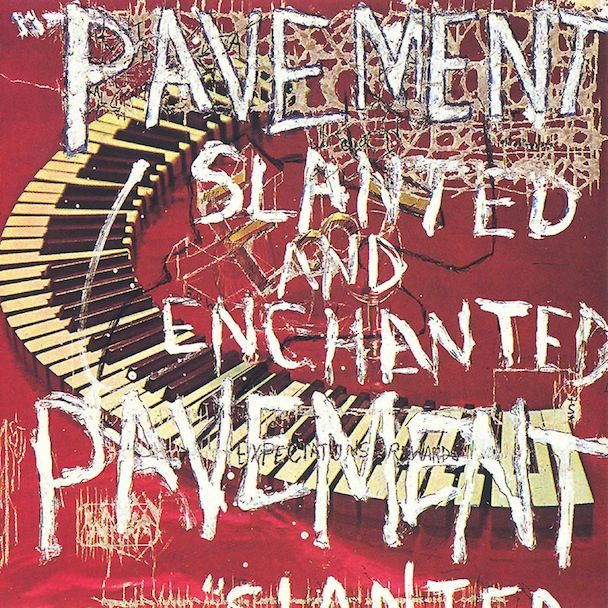
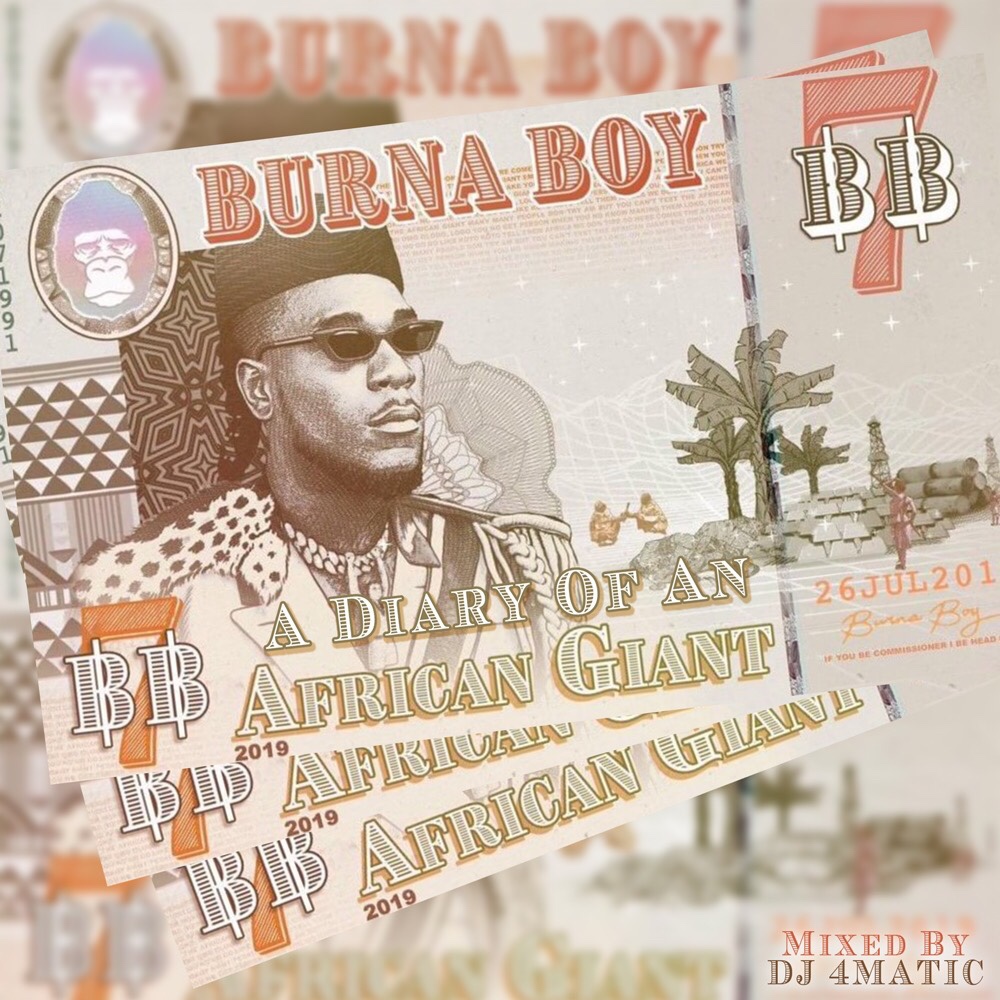
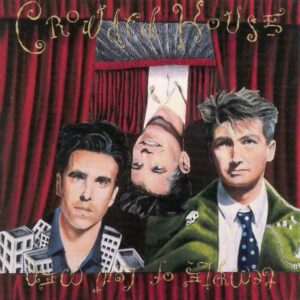











” most of it was bagpipes or classical music they never actually listened to.” Funny. Sounds excruciating. My parents were big-band lovers but oddly didn’t seem to own much in the way of records. They seemed to be much more interested in dancing to it as opposed to listening to it. My father had this drum thing called “Persuasive Percussion” which he’d listen to occasionally. Exactly zero of anything musical I got was not from them. I don’t know of anybody in my family (including cousins) who plays an instrument.
I didn’t punctuate that sentence very well – my dad did listen to bagpipes. He was quite musical – and his sister’s a really good pianist who’s appeared on record and worked as a music teacher. My mum learned piano to a highish grade but has zero sense of rhythm – she speeds up and slows down all over the place.
When I first started jamming on guitar with other guys, my rhythm playing was not steady. It’s improved over the years but the best advice one of those guys gave me was simply to tap my foot. And no offense to your old man but if I never hear bagpipes again it’d be all the same to me. Despite some Scottish blood.
I don’t think bagpipes really work in recorded music – live they’re domineering and kind of majestic, but you can’t capture that on a recording. Plus I think they only have eight notes and can only play in one key, so it’s easy for all the tunes to blend into each other.
I’ve picked up several albums by Sufjan and The New Pornographers after your posts on them. Thank you for the introduction to new-to-me good music.
Cool – hope you enjoy!
Really interesting to read this. I have to say that I thoroughly enjoyed it.
My ten would be:-
David Bowie – Ziggy Stardust
Slade – Slayed!
Mott The Hoople – Mott
Roxy Music – Stranded
Bob Dylan – Blood On The Tracks
Bruce Springsteen – Born To Run
The Clash – The Clash UK version (the ONLY one to listen to)
The Ramones – The Ramones
The Jam – All Mod Cons
Mink De Ville – Cabretta
These are not necessarily my favourite albums, but they cover the important formative years of 14-19 and they are ones that I know every note of every song.
A lot of what I listened to in my teens was pretty mainstream stuff like Crowded House and Billy Joel. Didn’t really get more adventurous until university. Who’s Mink de Ville? Have you seen Cincinnati Babyhead’s blog – I think you like quite similar stuff to him.
I can kill two birds with one stone here – Cincinnati Babyhead will tell you who Mink de Ville/Willy de Ville was. He has written an excellent review on one of his albums – Coup De Gråce. I tried to leave a comment on there but the system wouldn’t let me.
I have reviewed his work myself, of course. He was one of my real favourites in the late seventies/early eighties and still is.
Surely you know Spanish Stroll?
If you have ever seen the film “CBGBs” they use five De Ville tracks on the soundtrack.
Hey Punk. Your comment on Willy went to spam. Tried to retrieve and it got lost. I then went to your page and tried to leave a comment. Wouldn’t take it. Maybe my tech skills. But yeah Willy gets a lot of love from me and a few other folks that I’m in contact with on these pages. This Aph guy has a pretty broad range and anybody who’s a friend of Townes Van Zant is ok in my book.
I just barely know the name and that’s it.
He does a really good version of ‘Stand By Me’
I enjoyed your picks and write ups/ reviews- you covered a lot of ground in your selections.
Thanks for organising it!
Your welcome -it has been a lot of fun.
After following your blog all the picks made sense. The one that caught me by surprise was Magical Mystery Tour.
The one artist I thought you would pick and you didn’t was Van Morrison…but you probably covered more styles of music than anyone.
Also I thought you might pick Sticky Fingers.
Magical Mystery Tour isn’t my favourite but it’s maybe the one that was the most formative, while it also feels a bit overlooked by Beatles standards.
I could have easily made a top ten list from the first half of the 1970s with titles starting with S – something like:
Superfly
Sticky Fingers
St Dominics Preview
Selling England by the Pound
Something/Anything
Solid Air
Stranded
Sail Away
Shaft
Sunflower
Shaft and Superfly I wouldn’t have guessed…that is cool. I had Superfly on my list.
You did a great job though.
I tried to cover different styles with mine…I didn’t bother with the eras. I wanted but failed to cover a live album and a more country tinged album. I also picked albums that were personal to me.
I think early 1970s is probably peak time for rock albums – artists like Led Zep, Joni Mitchell, Stevie Wonder, and Roxy Music were cranking out a great 40 minute album every year.
“Stop Making Sense”, the film by David Byrne and Jonathan Demme is a congenial staging of the performance and simply belongs to the album. It would be a shame to miss the optical fascination of Talking Heads: text, lighting design, choreography and music tell the story of an “ecstatic emancipation”. The cinema version was a great success in the 80s.
Yup, the visual imagery was great. I assume a lot of it came from Byrne too.
Well, two of your picks are in my top 50 albums of all time. Those would be Magical Mystery and Court and Spark. The second best albums by both of those artists, contrary to what everyone thinks. The Simon & Garfunkel is my favorite by them. And also their best. Two of your picks I have never heard though.
I thought Court and Spark was consensus second favourite for Joni (behind Blue). Maybe Hejira is also up there though.
I don’t know now. Maybe Court and Spark is the consensus second best. I’m gonna have to look around a little bit. I would have thought it was about fourth after Hejira and Ladies. Or something like that. My actual favorite is Summer Lawns. I’m not sure where that would be.
I would say Court and Spark or Hejira. Ladies of the Canyon has a bunch of famous songs, but it’s cheesier than what came later. Summer Lawns is also beloved by Madonna and Prince.
Okay, this will be a list like yours that tells the story of my changing musical tastes over the years. Even though I was born in the 70s, it will start in the 60s for the obvious reason that the 60s had such an awesome amount of great music. And each album will represent a different style of music in the order that I started listening to them as I went along.
Pop-Rock –
Sgt Pepper’s Lonely Hearts Club Band..The Beatles
Psychedelic Rock
The Doors…The Doors
Hard Rock/Blues Rock
Houses of the Holy…Led Zeppelin
Singer-songwriter –
Sweet Baby James…James Taylor
Disco/Soul –
A Love Trilogy… Donna Summer
New Wave –
Wild Planet….The B-52’s
Synthpop –
Computer World…Kraftwerk
Alternative/Grunge –
Purple – Stone Temple Pilots
Ambient –
Orblivion…The Orb
Drum & Bass –
Logical Progression…LTJ Bukem
Electronica/Techno
Surrender…. The Chemical Brothers
Progessive House/Tech House
Bedrock 10…John Digweed
Cool! Almost half of my picks were from before I was born too. I actually listened to Wild Planet a couple of days ago.
Epic post, Graham. Fascinating reading. I admire your commitment to keeping abreast of new music. But what I admire even more is this summary of Court and Spark. At under forty words, it is one of the best short reviews i’ve ever read. Great work.
“Court and Spark was Mitchell’s first record with a full band, Tom Scott’s LA Express. Her music retains the confessional lyrics of earlier records like Blue, but the more sophisticated arrangements give her music more dynamism.”
Thank you for reading my epic post – I think it’s about three times as long as anything else I’ve ever posted!
Plus, even though they came out before I was born they were the first things I heard because my father listened to them all the time.
I didn’t really hear anything on my list until my teens.
Re: Mink De Ville
Thanks for trying with the comments CB. It’s a shame when you want to comment and can’t.
I was lucky enough to see Mink De Ville four times live in the 1980-83 period. He always ended his shows in that period with Stand By Me, a song that seemed made for him.
I remember before one show managing to sneak in while they were doing the soundcheck. It was dark in there as they were testing the lights so no-one saw me lurking at the back. Willy ran through three or four songs, in front of only a handful of roadies and me.
yeah. I checked it at two different album rating sites and on one of them Court and Spark was second and on the other one Hejira was second. At one of them had Ladies of the canyon at number 4 and one of them at number 5.
I wouldn’t have Ladies above 6th or 7th personally. Clouds is a better early album in my books.
The good ones on Ladies of the canyon are great but even after all these years I still don’t know the lyrics to all the other ones or even which one is which. Same thing with her first album. I still don’t know which song is which despite having the album for about 20 years. I don’t know why people don’t like Fo r the Roses that much. It’s my third favorite. It’s better than Hejira or Blue as far as I’m concerned.
For The Roses is always underrated – I think everything from 1971-1976 is better than anything from outside that era. ‘Blonde in the Bleachers’ is a great track.
For the Roses is great. I think it’s her first great one. And you know what? Don Juan’s Reckless Daughter is my fourth favorite. It’s actually only about half great, but it’s a double album. So I figure half of a great double album equals one great single album. lol.
Don Juan kind of fits with that 1971-76 era – just a bit much flab (while IMO she made five consecutive records before that with almost no filler).
I definitely feel like I have been on a journey. Thanks mate. This was cool.
Thanks for reading! I think it’s the longest single thing I’ve ever posted….